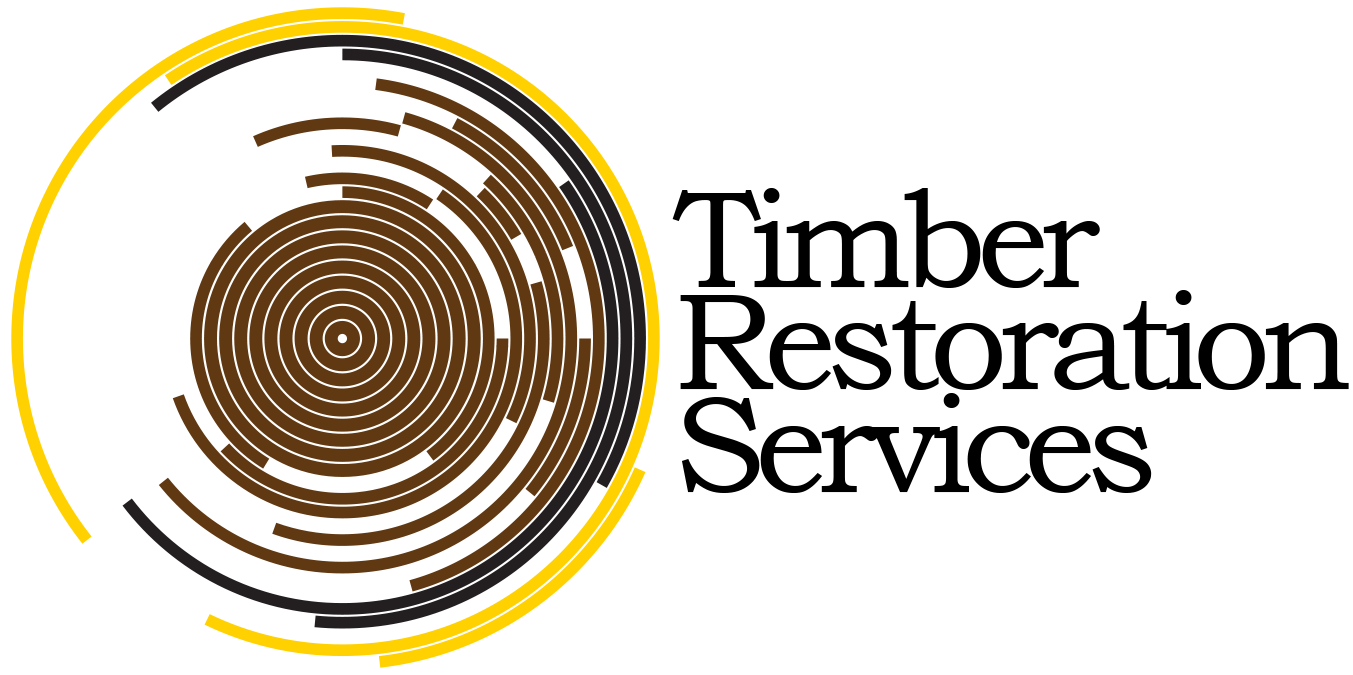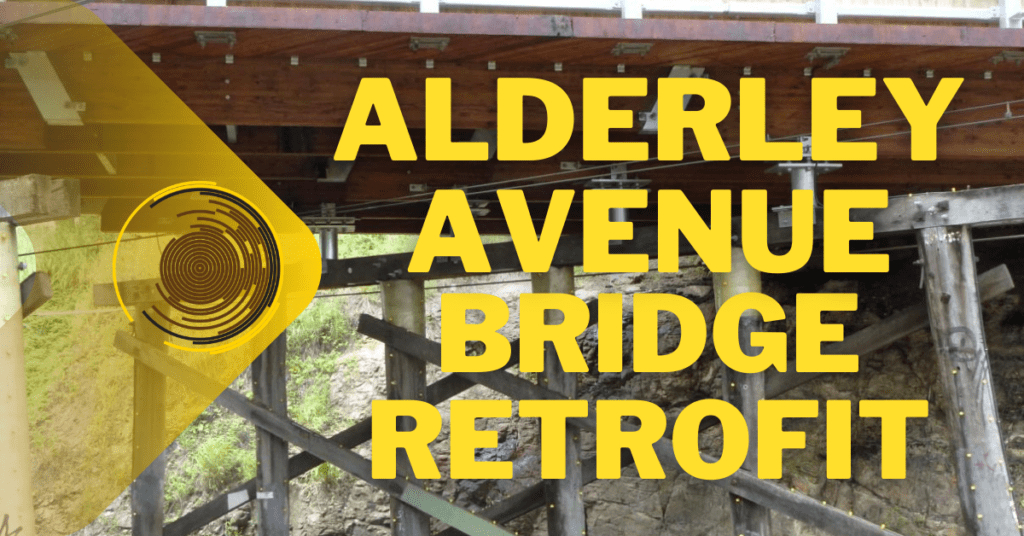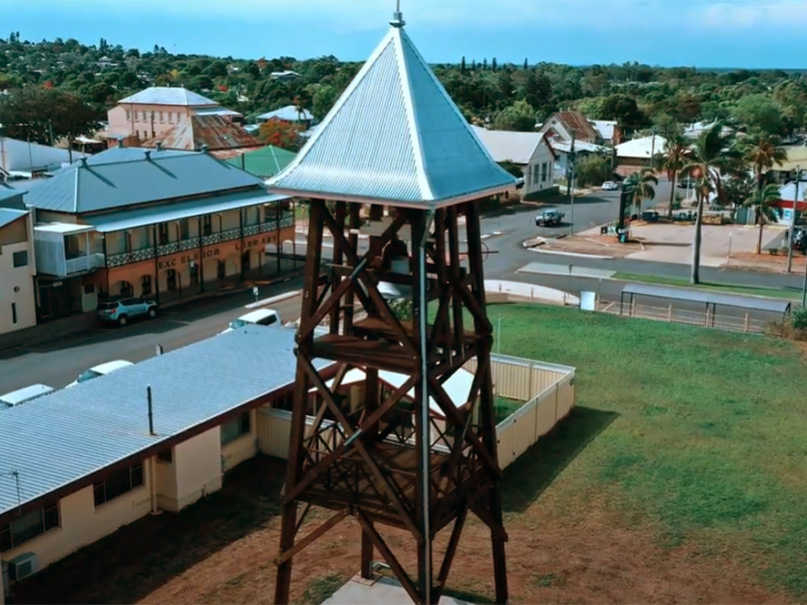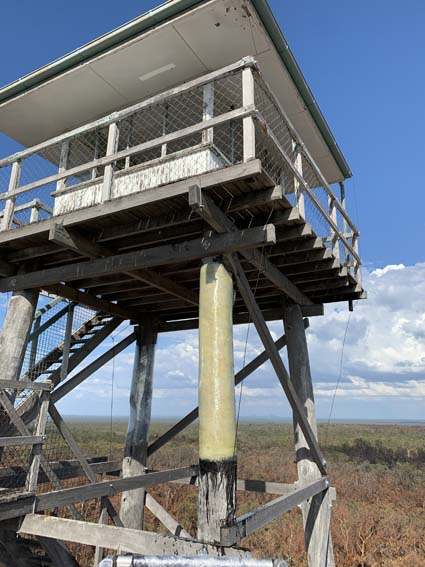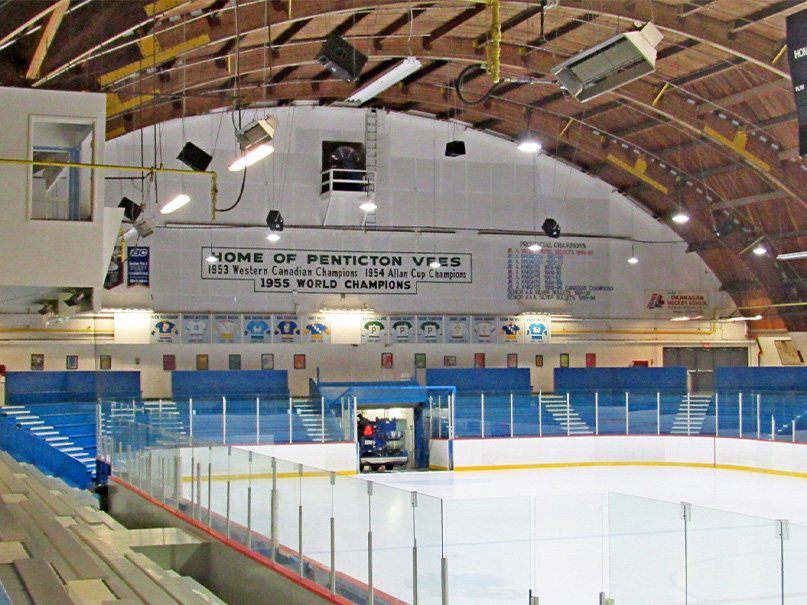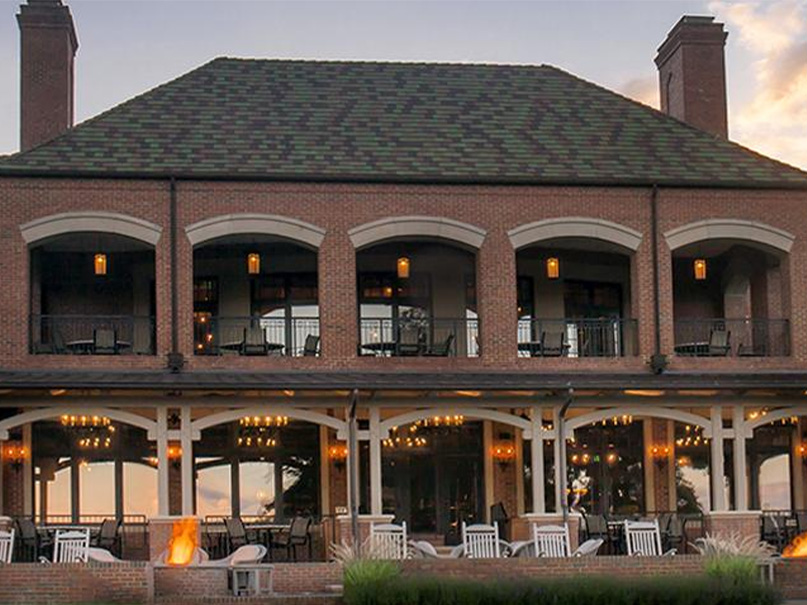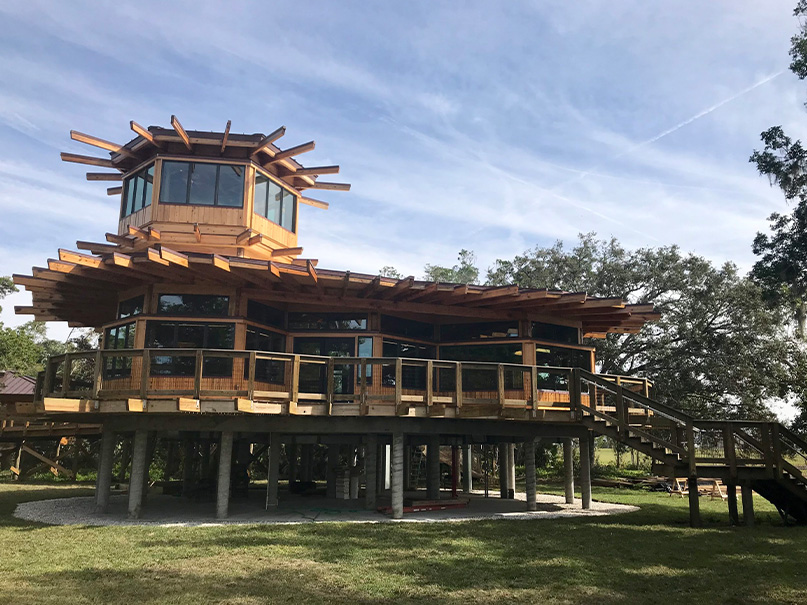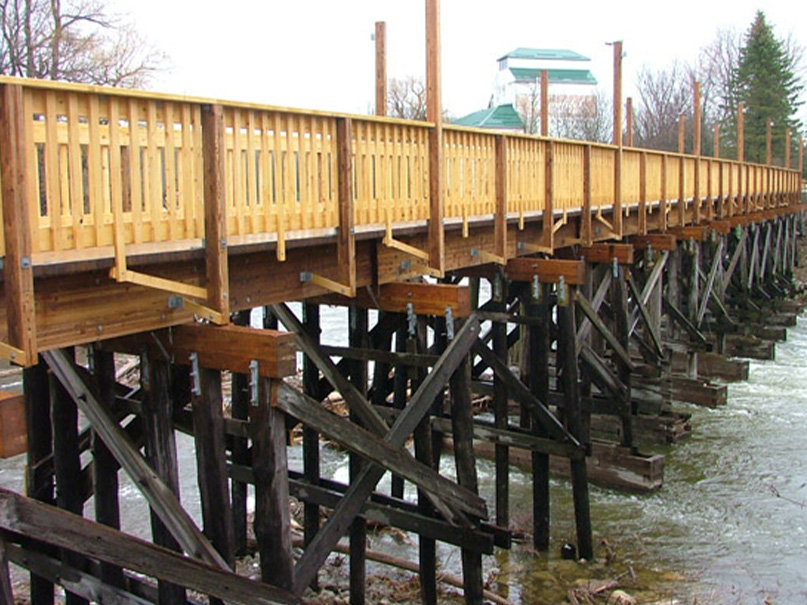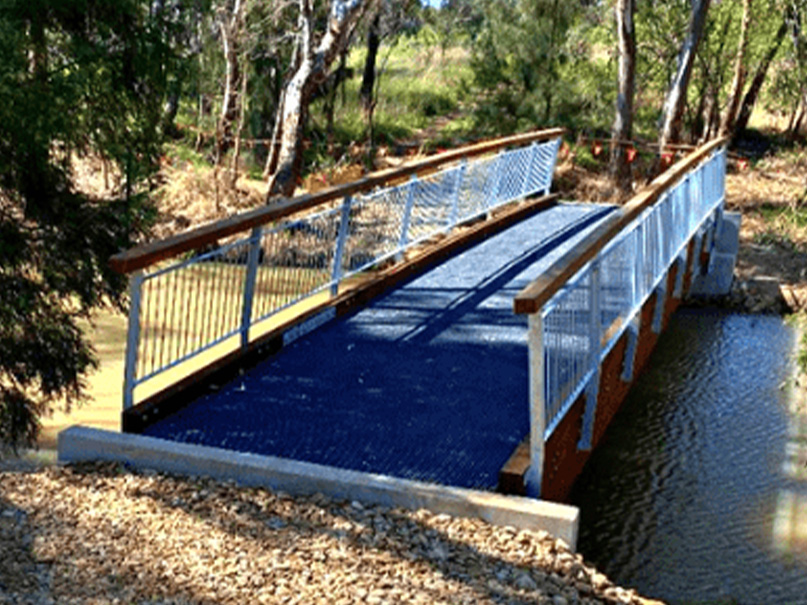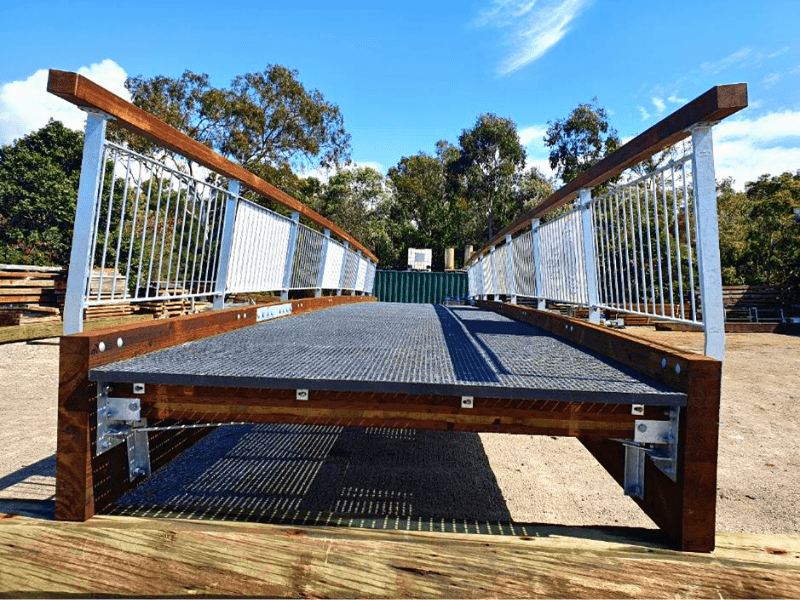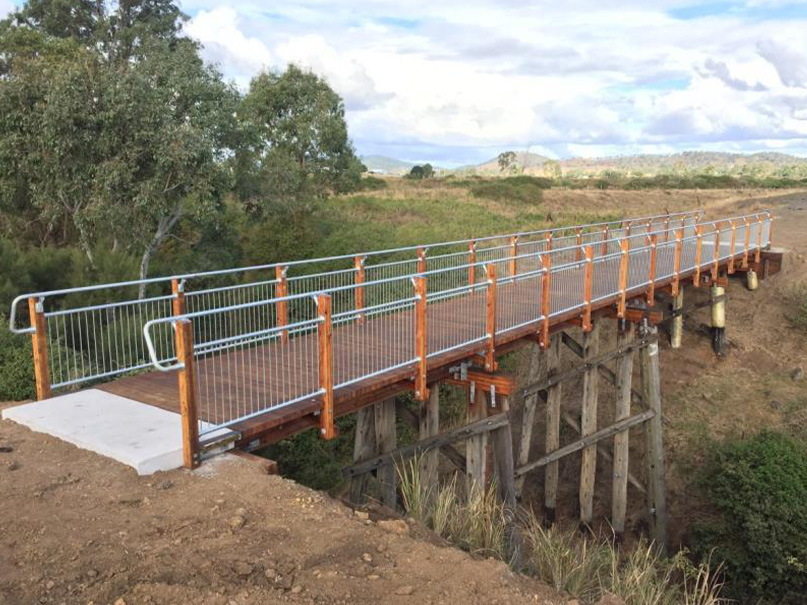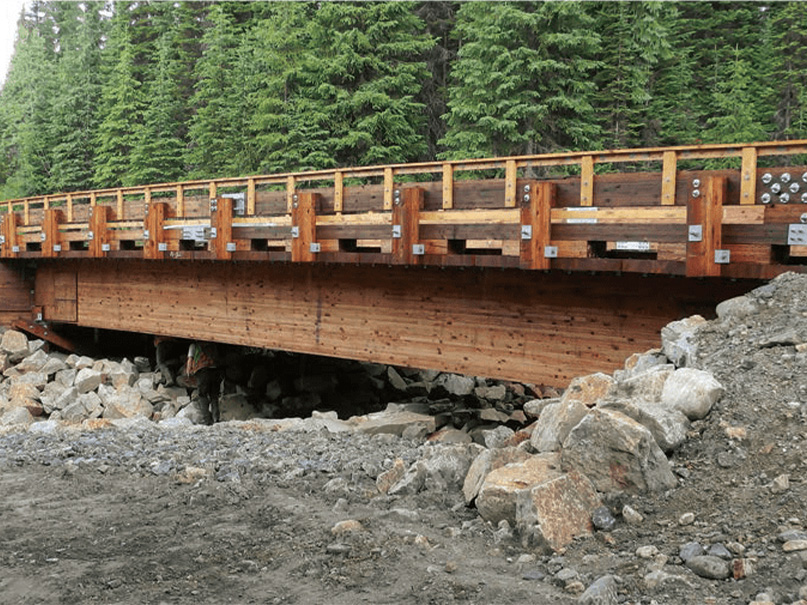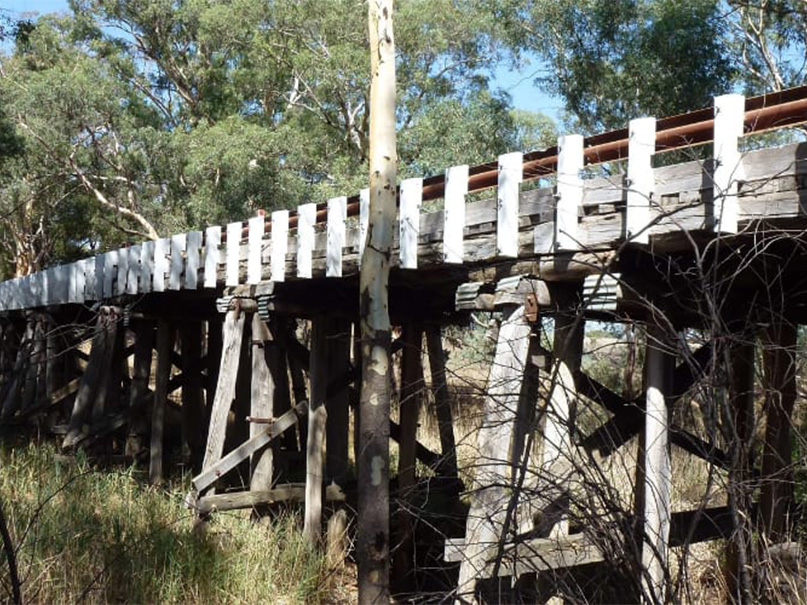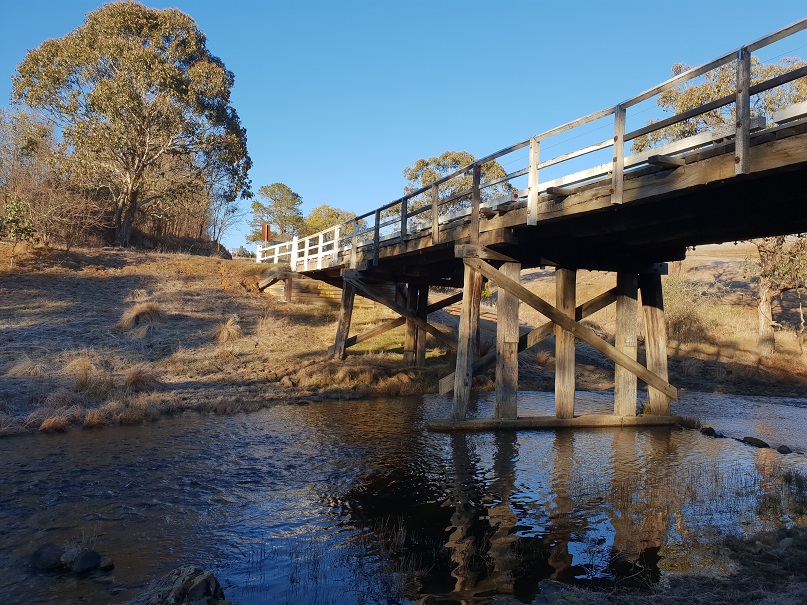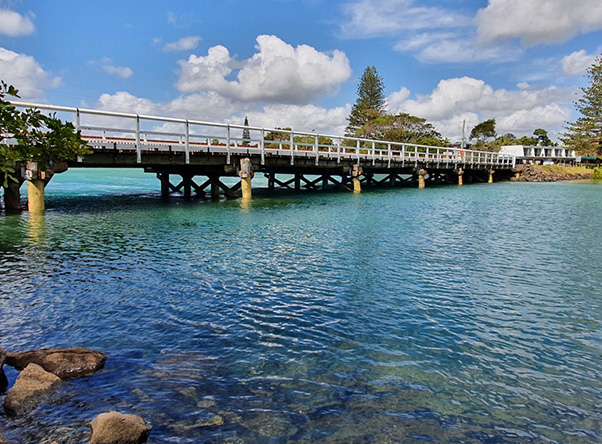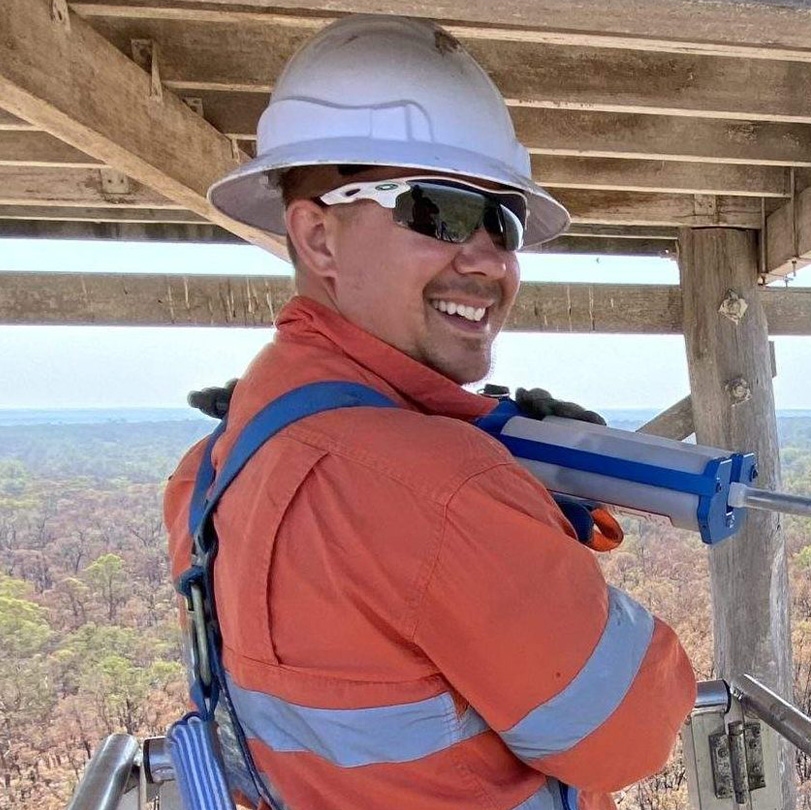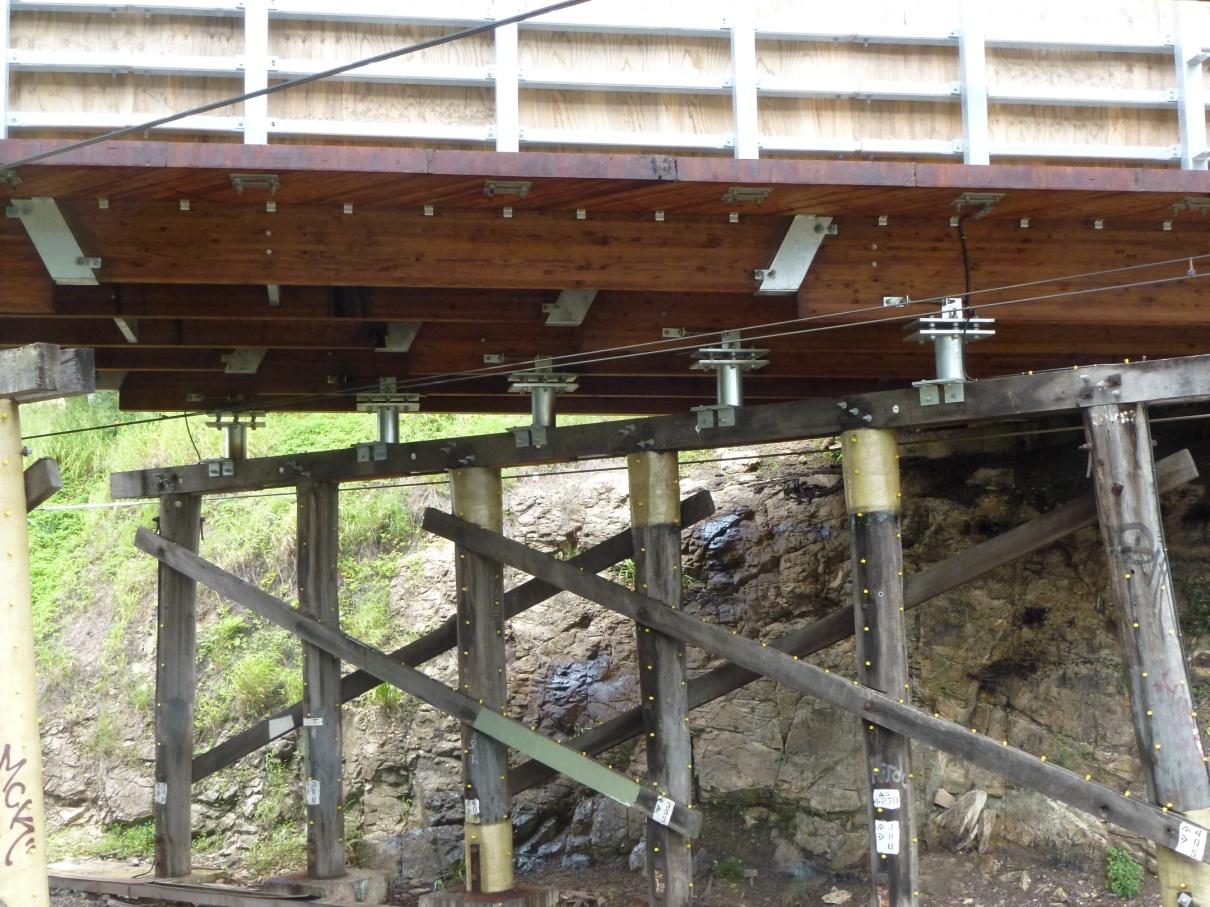
Alderley Avenue Bridge is a two lane vehicle bridge over a Queensland Rail railroad line. TRS’s partner company, Wood Research and Development inspected the bridge for structural defects and recommended restoration. Timber Restoration Systems performed the restoration work. The inspection found that the girders and deck were in very poor condition, so the client chose to perform a complete replacement of the deck and superstructure with glue-laminated girders and transverse deck panels. The piles were also showing signs of deterioration, but were in salvageable condition. The piles were restored using high-strength fiber wraps and injection with Structurfill™ epoxy.
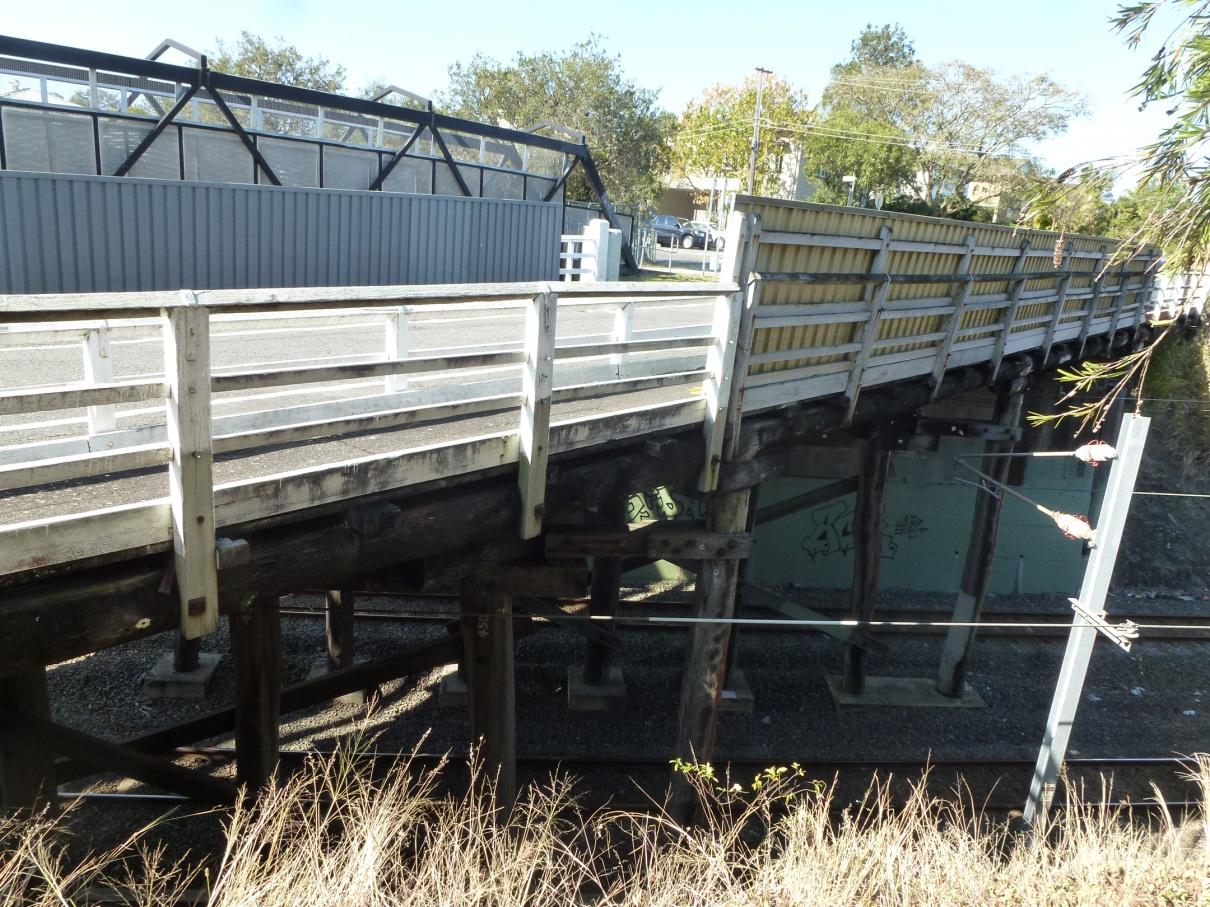
The existing bridge was three spans made up of round log girders spanning between concrete abutments and timber pile bents.
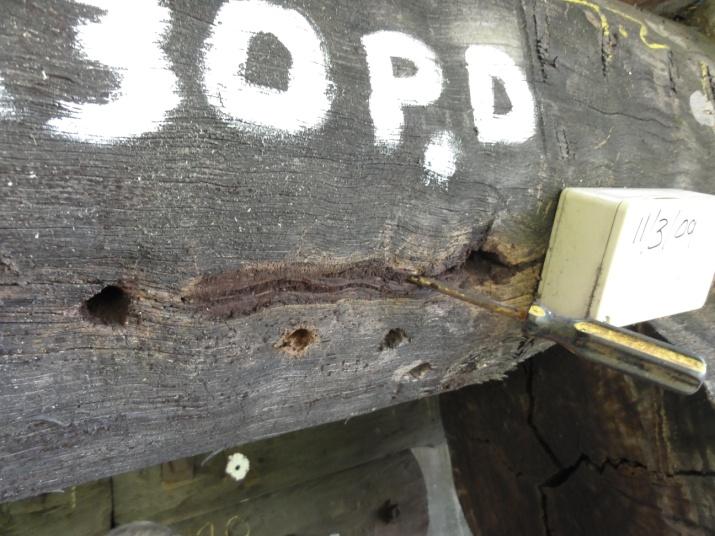
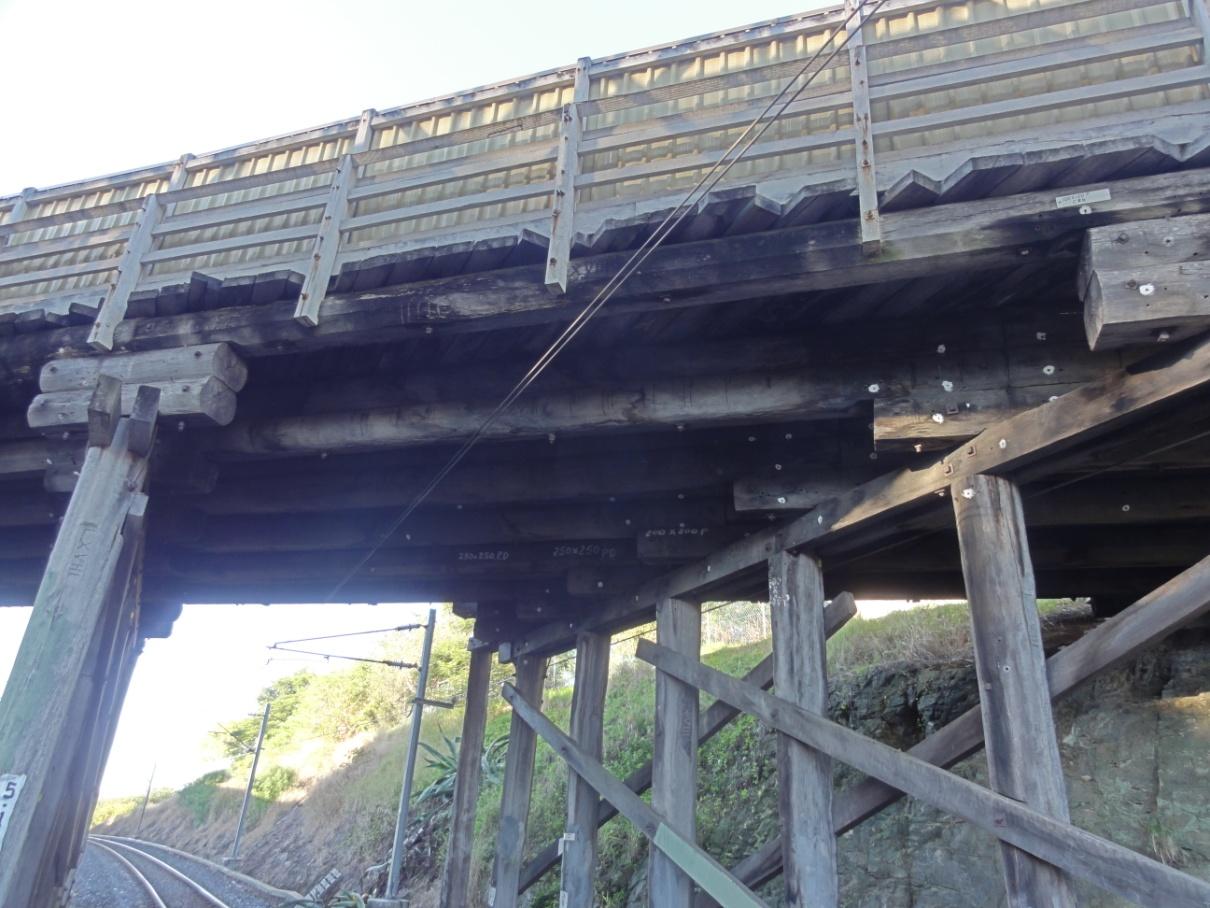
Each span was made up of 7 girder lines. The interior girders were doubled girders stacked on top of each other. The pile bents were made up of 6 piles, with a seventh pile supporting an adjacent walkway.
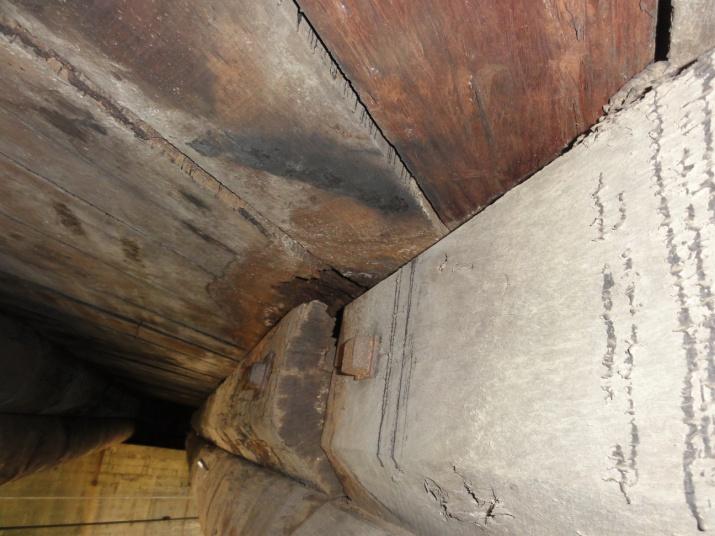
Several of the girders were highly decayed. WRD proposed a potential repair that would have included replacing some girders and retrofitting the others with FiRP® (fiber reinforced polymer) Retrotens® to provide a 44T load rating. However the client chose to replace the superstructure and deck with a new glue-laminated timber system.
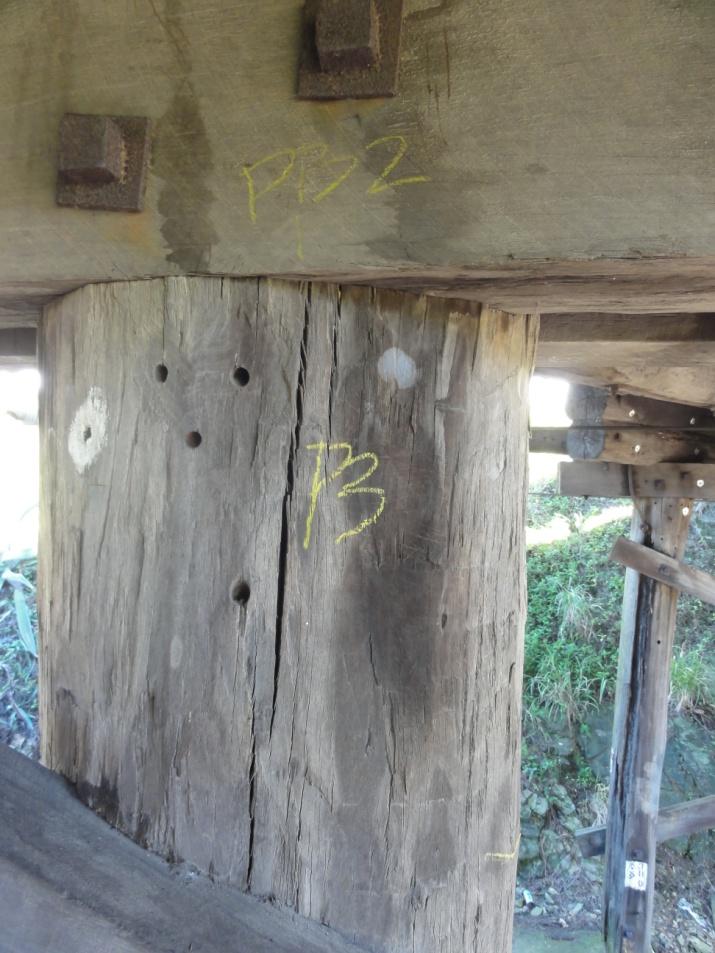
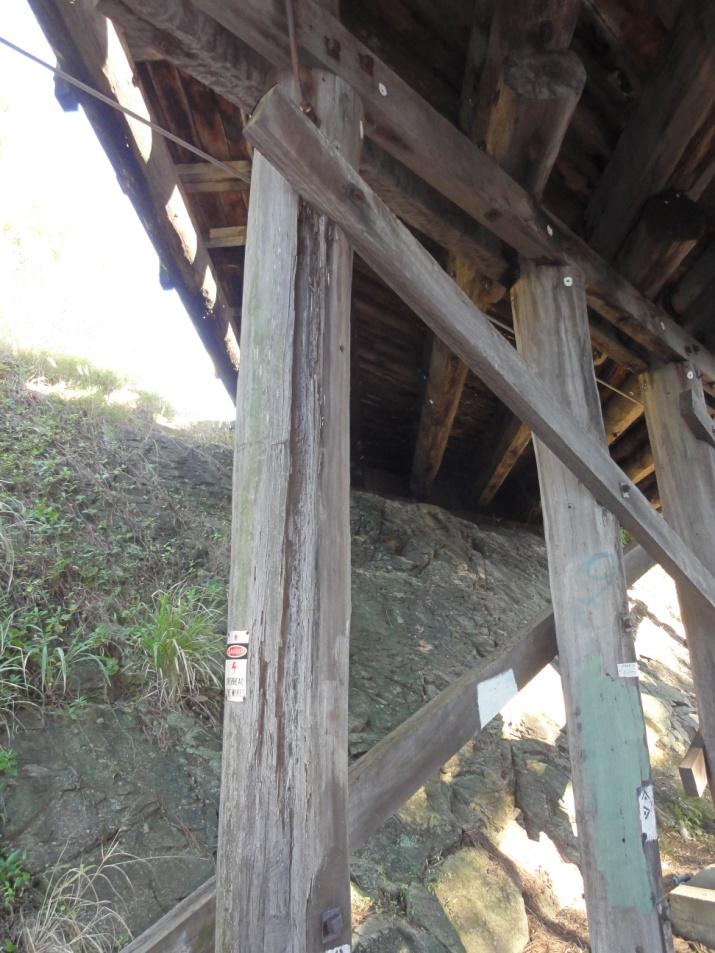
Many of the piles were heavily degrade, especially near the tops. The chosen repair was to keep the existing piles and retrofit them with high strength fiber wraps.
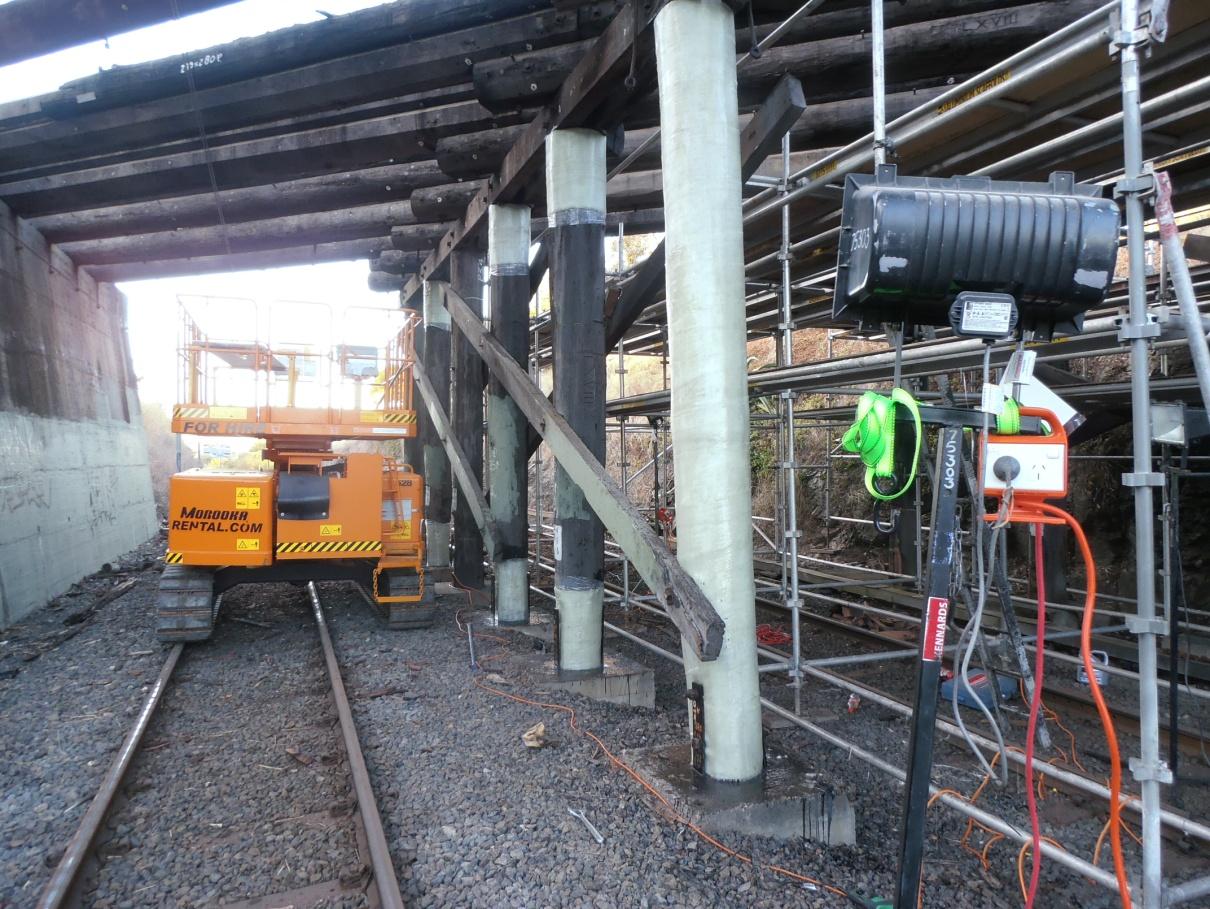
Retrofitted piles in bent 2. The pile in the foreground was wrapped full-height. The other piles were only wrapped at the top and bottom, where the decay was most severe.
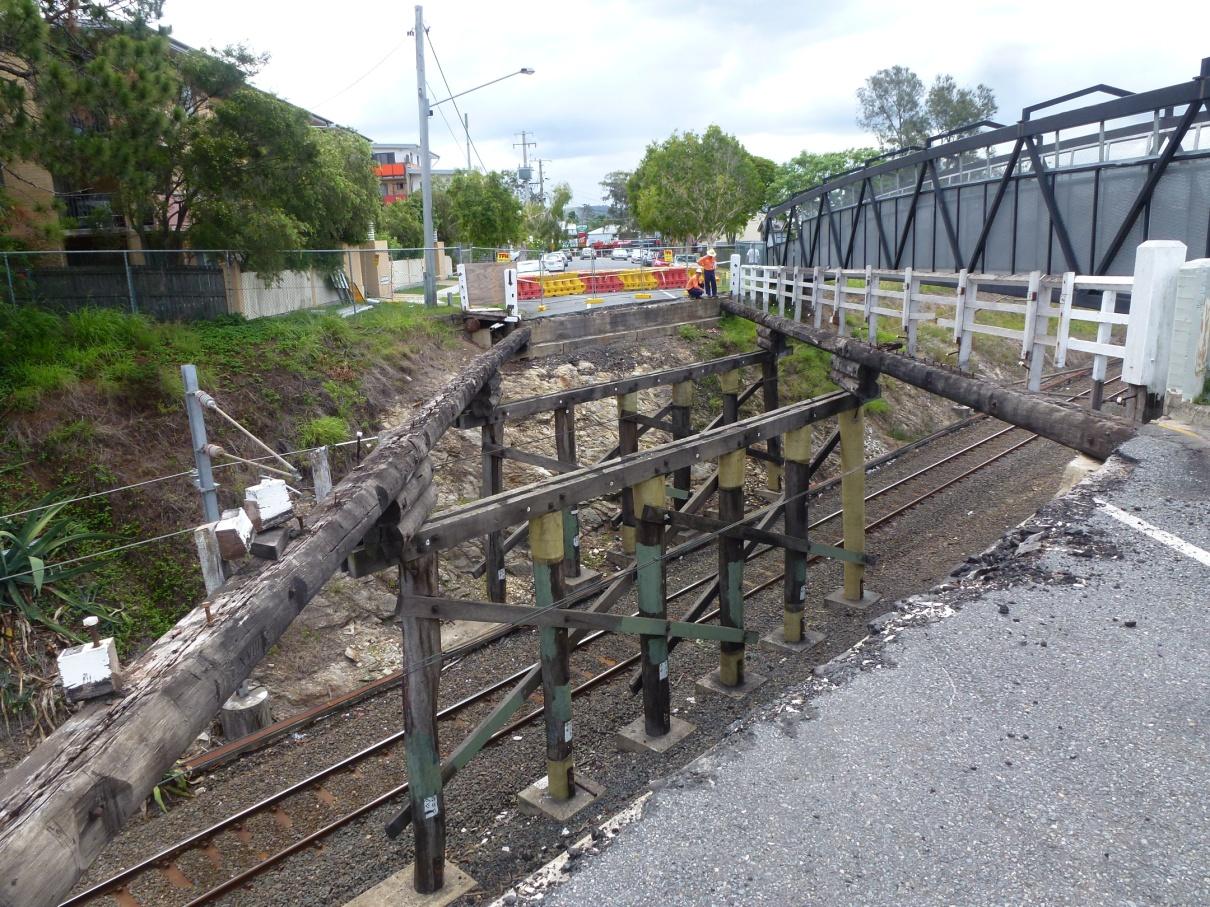
After retrofitting the pile bents, the deck and superstructure were removed.
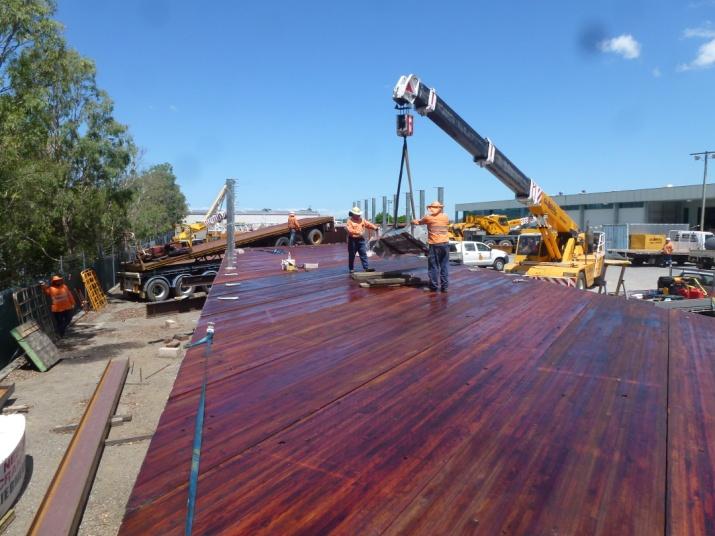
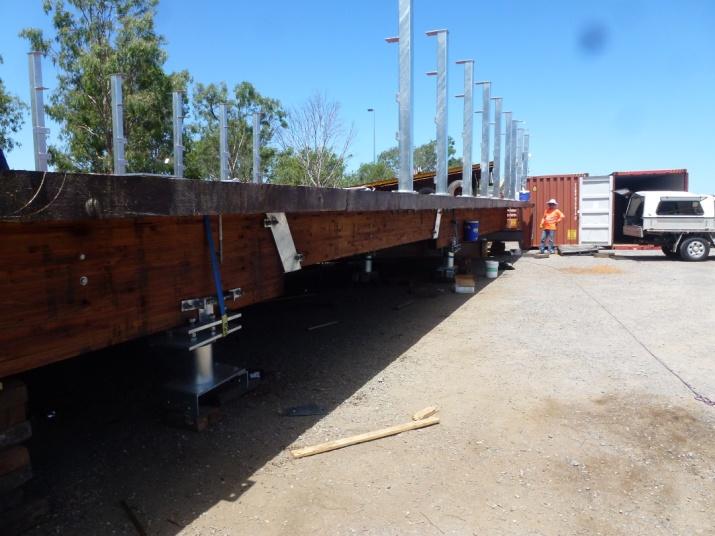
The new superstructure was pre-assembled and test-fitted off site.
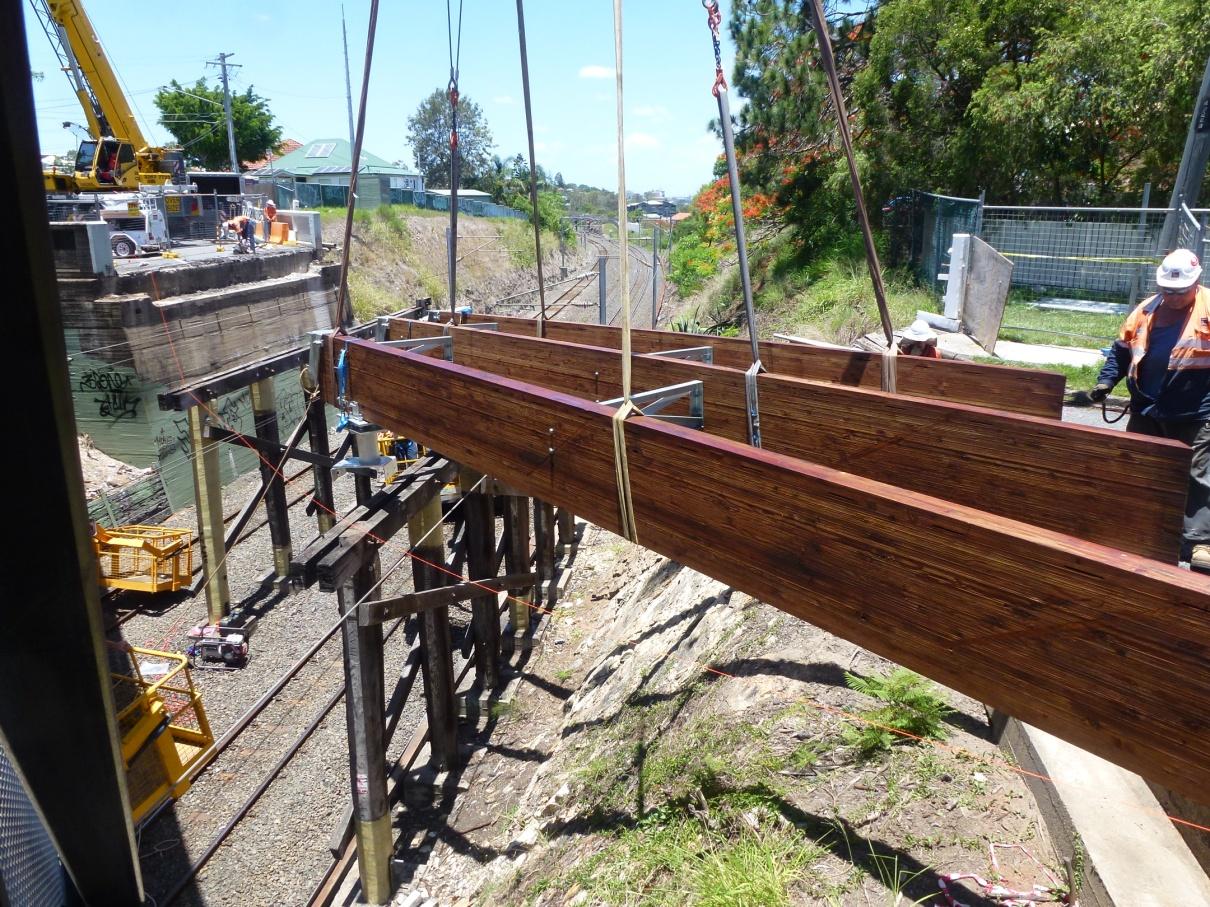
Assemblies were then transported to the site and lifted into place by crane.

Preassembling off site limited the amount of work that had to be completed above the railroad tracks. This minimized interruption to rail traffic.
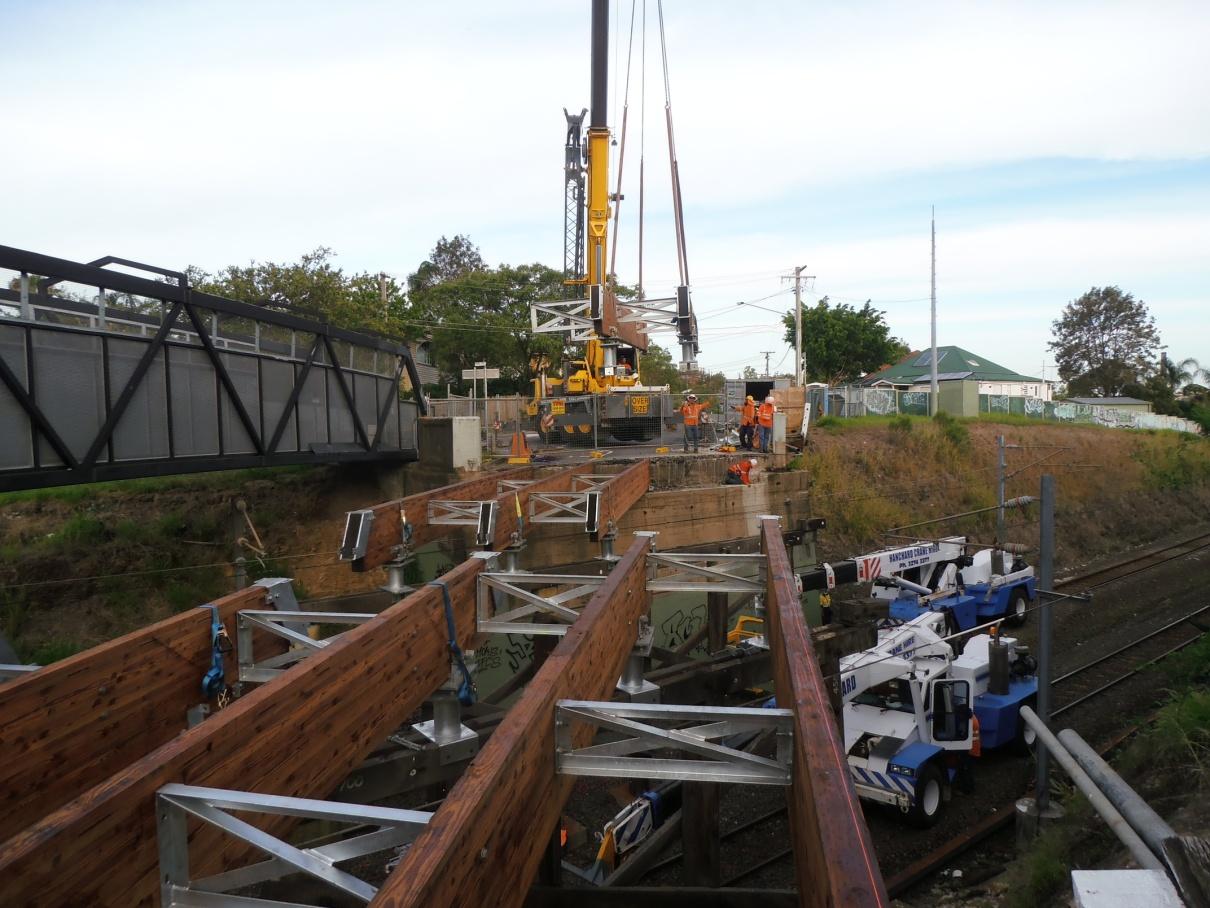
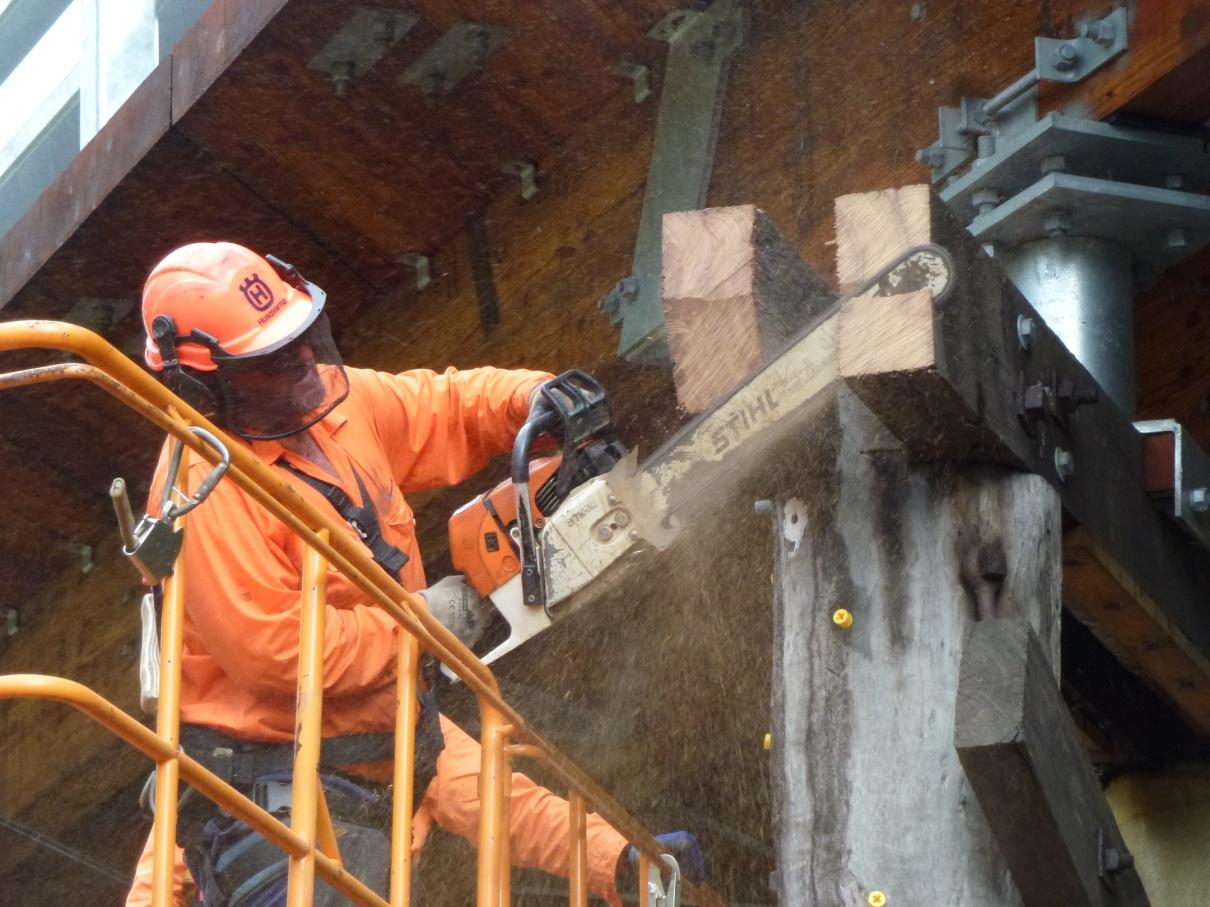
Existing timber components, such as these crossheads, were repaired by amputating decayed wood and shelf-cutting the ends.
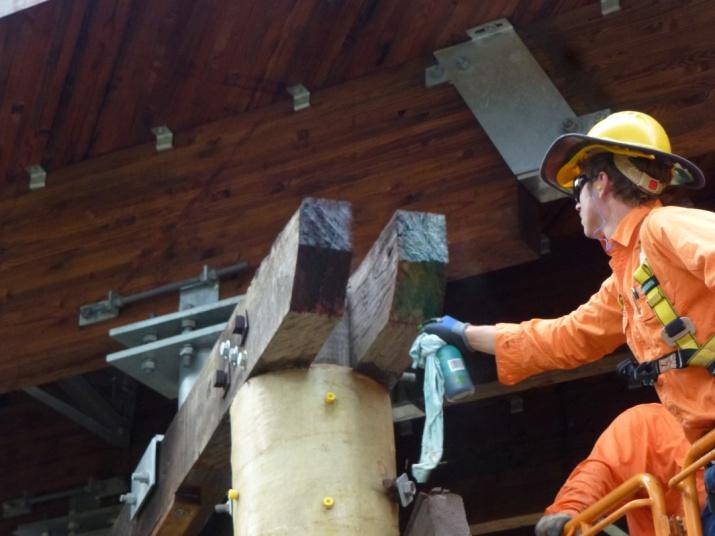

Cut faces were then treated with Copper Naphthenate wood preservative and coated with Anchor Seal paraffin wood sealant.
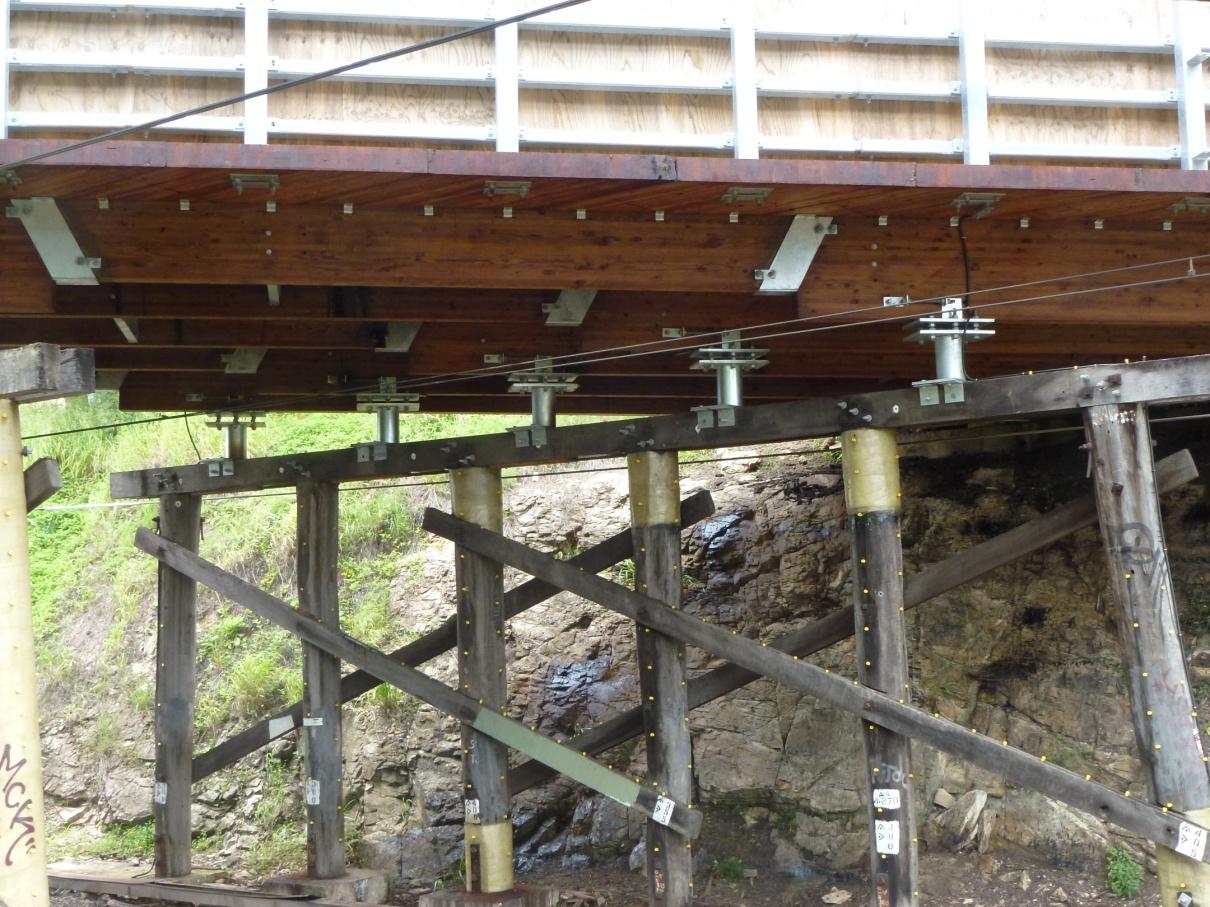
The completed retrofit at pile bent 1, including wrapped piles and new glue-laminated timber superstructure and deck with galvanized steel connectors. Note the yellow plastic bungs were the existing timber elements have been treated with Decaystop™ diffuser rods. Decaystop™ is a sodium-borate based wood preservative which is moisture activated to release when the moisture content of the timber rises above the point at which decay will start.
